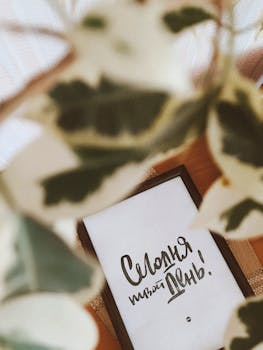The Importance of SEO Alt Text for Image Optimization
Understanding the Role of Alt Text in SEO
Alt text is a game changer for SEO. It’s not just about accessibility; it’s about visibility too. Strong alt text can make your images pop in search results.
Many think alt text is only for visually impaired users. But I believe it’s a key player in driving traffic. According to Rachel Handley from Semrush, “Alt text is important because it makes images more accessible to people and search engines, even when they cannot be displayed.” That’s a solid point!
Crafting alt text isn’t rocket science. Keep it descriptive and concise. The goal is to convey what’s happening in the image, not to cram in keywords. Keyword stuffing can backfire!
Some experts argue that alt text should be keyword-rich. But I think the focus should be on user experience first. After all, a user-friendly site is what keeps visitors coming back.
Let’s talk about the future. AI is stepping in to help generate alt text. Imagine a world where AI analyzes your images and suggests the best alt text. This could save time and boost accessibility!
Don’t forget about branding. Using alt text strategically can enhance brand visibility. Incorporating your brand name in a relevant context can help you stand out in image searches.
In summary, alt text is more than just a box to check. It’s a vital tool for SEO. So, let’s give it the attention it deserves!
Utilizing Alt Text for Brand Visibility
Many people think alt text is just for SEO. But I believe it’s a powerful branding tool too. By incorporating brand names and product details into alt text, you can boost visibility across search engines.
It’s that simple! Think about it: when users search for images, they often look for specific products. If your alt text describes your brand effectively, you stand out from the competition.
According to Rachel Handley from Semrush, “Alt text is important because it makes images more accessible to people and search engines.” So why not use it to your advantage?
Some experts suggest that focusing solely on SEO benefits limits the potential of alt text. I think it’s better to create alt text that resonates with real users first. This approach enhances accessibility while subtly promoting your brand.
As visual search grows, the marketing potential of alt text will deepen. It’s not just about getting clicks; it’s about creating connections. By crafting descriptive alt text, you can tell a story about your brand that resonates with users.
Incorporating branding elements in alt text isn’t just smart; it’s necessary. When users see familiar names, they’re more likely to engage. This can lead to higher conversion rates.
Remember, alt text is your chance to speak directly to your audience. Make it count! Use it to showcase not just what’s in the image, but what your brand stands for.
Ensure that every visitor, as well as search engines can access your content by making sure you set descriptive alt text for all your websites images. How To …
Nov 27, 2023 … Adding alternative text to images on your site is a principle of web accessibility. · Alt attributes enable screen readers to read the …
Sep 27, 2018 …Images are a big source of organic traffic for your blog or website. Here's why and how you should optimize your image alt text for SEO.
Image Alt Text: What It Is, How to Write It, and Why It Matters to SEO
Jan 12, 2022 … It's important but don't stuff them with keywords. Keep it balanced and natural . … They should accurately describe the image (in a general way) …
Best Practices for Writing Effective Alt Text
Writing effective alt text is a game changer for SEO. It’s not just about keywords; it’s about clarity. Alt text should be descriptive and relevant. Keep it brief, ideally under 125 characters. This helps screen readers and search engines alike.
Many experts stress avoiding keyword stuffing. Instead, focus on conveying the image’s purpose. According to Satya D. from Surfer, “Your alternative text must be optimized for both search engines and users reading your content.” That’s the sweet spot!
Some say branding can enhance alt text. I believe it’s true! Incorporating brand names in a thoughtful way can boost visibility without sacrificing user experience. This blends SEO with a personal touch.
Let’s not forget about common mistakes. Vague descriptions and ignoring decorative images are huge no-nos. Lydia F. from the Bureau of Internet Accessibility warns, “When you write alt text specifically for search engines, you’re creating issues for people with disabilities.”
Using tools like Semrush or Yoast SEO can simplify alt text management. But here’s an idea: why not create custom templates tailored to your brand? This makes alt text a strategic asset, not just a checkbox.
As we look ahead, AI could transform how we generate alt text. Imagine a system that analyzes images and suggests optimized descriptions! The future is bright for alt text.
In conclusion, effective alt text is about striking a balance. It’s about being user-focused while still considering SEO. Get it right, and you’ll see the benefits!
Jun 13, 2023 … Mentor, Consultant for Digital Marketing, Helping… · Use high-quality images. · Use relevant keywords in the file name and alt text. · Group …
Dec 19, 2023 … Learn some best practices for using alt text, or alternative text, to describe your images for accessibility, SEO, and user experience in …
The Future Impact of AI on Alt Text Generation
Most people think AI will just automate alt text creation. I think it can do much more because AI can analyze context and user behavior to generate tailored descriptions. Imagine alt text that adapts based on who’s viewing it!
AI can help create alt text that isn’t just functional but also engaging. For instance, if a user is searching for vegan recipes, AI could generate alt text that highlights plant-based ingredients in food images. This goes beyond basic descriptions and enhances user experience.
According to Nikoleta Kokleviciute from TinyIMG, “With image ALT texts on your online store, you are ensuring that your Shopify store images have great quality and optimization.” This suggests that AI can optimize alt text not only for accessibility but also for marketing.
Some experts argue that AI-generated alt text might lack the human touch. But I believe that combining AI with human oversight can yield the best results. Humans can refine AI suggestions, ensuring that alt text resonates with real users.
As we look forward, the integration of AI into alt text generation will likely redefine SEO strategies. This isn’t just about following guidelines; it’s about creating a more inclusive and engaging online experience.
Presenting alt text as an essential SEO tool
The importance of SEO alt text for image optimization is often underestimated. Here are some key insights to consider:
- Alt text boosts accessibility. It helps visually impaired users understand images through screen readers.
- Search engines rely on alt text. It aids in indexing images, improving search rankings.
- Concise descriptions are key. Effective alt text should be brief yet informative, capturing the image’s essence.
- Avoid keyword stuffing. Focus on clarity and relevance instead of cramming in keywords.
- Tools can simplify alt text management. Platforms like Semrush and Yoast SEO help optimize and streamline the process.
- AI is changing the game. Future alt text generation may rely on AI for contextually rich descriptions.
- Branding opportunities exist. Incorporating brand names in alt text can enhance visibility and recognition.
Common Mistakes to Avoid in Alt Text
Many people think that any description will do for alt text. But let me tell you, vague descriptions are a big no-no! Alt text should be clear and specific. It’s not just about filling a space; it’s about enhancing accessibility.
Another common mistake? Ignoring decorative images. According to Lydia F. from the Bureau of Internet Accessibility, “When you write alt text specifically for search engines, you’re creating issues for people with disabilities.” So, skip the alt text for images that don’t convey meaningful content.
Keyword stuffing is another trap many fall into. Sure, you want to rank higher, but overloading alt text with keywords can confuse screen readers. Instead, focus on crafting descriptions that genuinely reflect the image content.
Most folks believe that optimizing for SEO is the end goal. But I argue that the user experience should come first. Tailoring your alt text to serve real users leads to better engagement and accessibility.
Some professionals suggest using user feedback to improve alt text. This approach can help identify what descriptions resonate best with visually impaired users. It’s about making the web a better place for everyone!
Lastly, let’s talk about the future. AI is stepping in to help generate alt text. Imagine a tool that analyzes your images and suggests context-relevant descriptions. This could save tons of time and improve accessibility across the board.
Alt text, or alternative text, is a short, written description of an image. Well-written alt text is important for accessibility and search engine optimization.
Structure and Formatting | National Institutes of Health (NIH)
Alternative text, also known as alt text, is descriptive text that conveys the meaning of an image in digital content.
important to not only SEO but also to mobile optimization. Figure 3 … Examples of metadata include meta descriptions, heading tags, and alt text.
Jun 20, 2023 … These strategies are adapted from the principles of search engine optimization (SEO) in content marketing. … The title tag is the most important …
Writing strategies for improving the access of medical literature – PMC
Balancing keyword usage and user experience
Finding the sweet spot between SEO and user experience is key for effective alt text.
- Alt text is not just for search engines. It’s meant to enhance accessibility for all users.
- Descriptive alt text improves user experience. It helps visually impaired users understand image content.
- Avoid keyword stuffing. This can confuse screen readers and frustrate users.
- Think of alt text as a mini caption. It should provide context without being overly promotional.
- Integrate brand elements wisely. Brand names can be included but should feel natural and relevant.
- Keep it concise and informative. Aim for clarity over complexity.
- User feedback is invaluable. Engaging with users can refine your alt text strategy.
Recommended Tools for Alt Text Management
Here’s a handy list of tools to help you optimize and manage your alt text effectively. These tools can streamline your process and improve both accessibility and SEO.
- 1- Semrush: This tool offers comprehensive SEO analysis, including alt text optimization tips. It helps ensure your images are indexed correctly.
- 2- Yoast SEO: A popular choice for WordPress users, Yoast checks for missing alt text and offers suggestions for improvement.
- 3- TinyIMG: Focuses on image SEO, helping you manage alt text in bulk while ensuring your images are optimized for speed and SEO. According to Nikoleta Kokleviciute, “With image ALT texts on your online store, you are ensuring that your Shopify store images have great quality and optimization.”
- 4- ImageKit: This tool automates image optimization and allows you to manage alt text easily. It’s great for sites with large image libraries.
- 5- Accessibility Checker: This browser extension scans your site for accessibility issues, including missing alt text, making it easier to comply with guidelines.
What common mistakes should I avoid in writing alt text?
Many people think that vague descriptions are acceptable for alt text. But I believe that precise descriptions are key. For instance, instead of saying ‘image of a dog,’ try ‘Golden Retriever playing in the park.’ It’s that simple!
Another mistake is ignoring decorative images. They don’t need alt text at all. According to Lydia F. from the Bureau of Internet Accessibility, ‘When you write alt text specifically for search engines, you’re creating issues for people with disabilities.’ That’s a serious issue!
Keyword stuffing is another trap. Some folks load alt text with keywords, thinking it boosts SEO. But it actually confuses screen readers. The focus should be on clarity and context, not cramming in keywords.
Most experts recommend avoiding overly complex language. Use simple, straightforward terms. Your goal is to communicate effectively, not to impress with vocabulary.
Lastly, don’t forget to review and update alt text regularly. As your content evolves, so should your alt descriptions. Keeping them relevant is crucial for both accessibility and SEO.
How can I write effective alt text for my images?
Writing effective alt text is all about being clear and concise. Your goal is to describe the image in a way that makes sense to someone who can’t see it. Focus on the image’s purpose and context.
For example, if it’s a picture of a dog playing fetch, say just that. Avoid vague phrases like ‘image of’ or ‘picture of.’ Get straight to the point!
Some people believe that stuffing keywords into alt text is the way to go. But I think that’s a mistake. Keyword stuffing can hurt your SEO and annoy users. Instead, make it natural and relevant.
Another perspective is to integrate brand elements into your alt text. Many experts recommend keeping it user-focused, but I think you can do both. A little branding doesn’t hurt if it fits the description.
Lastly, using tools like Semrush or Yoast SEO can help streamline your alt text creation process. But don’t rely solely on them. Your unique voice matters!
As noted by Rachel Handley from Semrush, “Alt text is important because it makes images more accessible to people and search engines, even when they cannot be displayed.” So, make your alt text count!
What is the primary purpose of alt text in SEO?
Alt text is a game changer for SEO. It serves as a text alternative for images. This means search engines can understand what the images are about.
Most people think alt text is just for accessibility. But I believe it’s equally vital for image optimization. Without it, images can’t contribute to your site’s SEO.
An effective alt text boosts your search rankings by helping search engines index images properly. According to Rachel Handley from Semrush, “Alt text is important because it makes images more accessible to people and search engines, even when they cannot be displayed.”
Many overlook this, thinking it’s just a minor detail. But it’s not! It’s a key element in driving organic traffic.
Some experts suggest focusing on user experience rather than just SEO benefits. I totally agree! Crafting alt text that serves real users first enhances overall accessibility.
Let’s not forget the importance of keywords. A well-optimized alt text can improve image search visibility. As Jordan Brannon from Coalition Technologies puts it, “Optimizing alt text will improve your image SEO by making it more accessible for page readers and indexable to search engine crawlers.”
So, don’t sleep on alt text! It’s a simple way to boost your SEO strategy.
Can AI assist in generating alt text, and how?
Most people think AI can’t handle alt text generation effectively. I disagree because AI tools can analyze images and create contextually relevant descriptions. This means better accessibility for visually impaired users and improved SEO.
AI can learn from existing best practices. It can adapt to current trends, ensuring your alt text remains relevant. As Nikoleta Kokleviciute from TinyIMG states, ‘With image ALT texts on your online store, you are ensuring that your Shopify store images have great quality and optimization.’
However, some experts argue that human touch is irreplaceable. They believe that understanding the emotional context behind images is crucial. But I think AI can complement human efforts, making the process faster and more efficient.
As we look ahead, the future of alt text generation will likely involve more AI integration. This could redefine how we approach web accessibility and SEO strategies. Embracing these technologies might just be the key to staying ahead in the digital landscape.
What tools are available for managing alt text?
Managing alt text can be a breeze with the right tools. Platforms like Semrush and Yoast SEO offer plugins that automatically check for missing alt text and suggest improvements. TinyIMG is another great option that helps ensure your images are optimized for SEO.
Some folks think automated tools are enough, but I believe in a more tailored approach. Custom solutions, like building specific templates for your industry, can make alt text management more effective. This way, you align it with your branding and marketing strategies.
According to Nikoleta Kokleviciute from TinyIMG, ‘With image ALT texts on your online store, you are ensuring that your Shopify store images have great quality and optimization.’ So, why not leverage these tools to boost your SEO game?
Many people think alt text is just for SEO. I believe it’s way more than that because it boosts accessibility for everyone. According to Rachel Handley from Semrush, “Alt text is important because it makes images more accessible to people and search engines, even when they cannot be displayed.”
It’s that simple! If you nail your alt text, you enhance user experience and improve your search rankings. Avoid vague descriptions and keyword stuffing. Instead, focus on clarity and relevance.
Some experts argue that alt text should prioritize user experience over SEO. I totally agree! Crafting informative descriptions helps everyone, especially those using screen readers.
Let’s not forget the future! The role of AI in generating alt text could change the game, making it easier to create contextually relevant descriptions that resonate with users.
Alt text isn’t just a checkbox for SEO. It’s a bridge for visually impaired users to engage with your content. When I write alt text, I focus on clarity and relevance.
Many people think keyword stuffing is the way to go. But I believe that a simple, clear description is far more effective. According to Rachel Handley from Semrush, ‘Alt text is important because it makes images more accessible to people and search engines.’
Let’s not forget about user experience! Crafting alt text that resonates with real users is key. It’s about making your site welcoming for everyone.
AI tools are on the rise! They can generate alt text but should be used wisely. I think a human touch is irreplaceable for genuine context.
To wrap it up, prioritize user needs over SEO gimmicks. That’s how you truly optimize your images!
Many believe keyword stuffing is the way to go for SEO. I think that’s a big mistake! Crafting alt text should prioritize clarity and user experience over cramming in keywords.
According to Lydia F. from the Bureau of Internet Accessibility, “When you write alt text specifically for search engines, you’re creating issues for people with disabilities.” This shows that user-friendly descriptions are far more effective.
Instead of focusing on SEO tricks, let’s create alt text that genuinely informs. This way, we boost accessibility and still keep search engines happy.
Many believe AI can’t grasp the nuances of alt text. I think it can, and here’s why. AI can analyze images and generate contextually relevant descriptions, making it a potential powerhouse for accessibility.
While some argue that human touch is irreplaceable, I see AI as a tool for efficiency. By automating alt text creation, we save time and reduce human error. Imagine a world where your images are perfectly described without lifting a finger!
According to TinyIMG, “With image ALT texts on your online store, you are ensuring that your Shopify store images have great quality and optimization.” Why not let AI handle the heavy lifting?
Most people focus on manual writing for alt text, but leveraging AI can elevate our game. It’s not just about saving time; it’s about enhancing accessibility for everyone.
Many think alt text is just about descriptions and SEO. I believe it should also reflect your brand. By weaving in brand names and product details, you not only optimize for search engines but also enhance brand recognition.
Take a product image, for instance. Including the brand name in the alt text can make it more memorable. It’s that simple! This approach aligns with the idea that alt text can serve dual purposes—accessibility and marketing.
Some may argue that focusing solely on SEO is enough. But I think we should prioritize user experience. Crafting alt text that resonates with users creates a stronger connection, leading to better engagement.
Incorporating brand elements can significantly boost visibility in an era where image searches are growing. As Rachel Handley from Semrush stated, “Alt text is important because it makes images more accessible to people and search engines.”
So, don’t underestimate the power of alt text. Use it wisely to promote your brand while improving accessibility!

Albert Mora is an internationally renowned expert in SEO and online marketing, whose visionary leadership has been instrumental in positioning Seolution as a leader in the industry.








